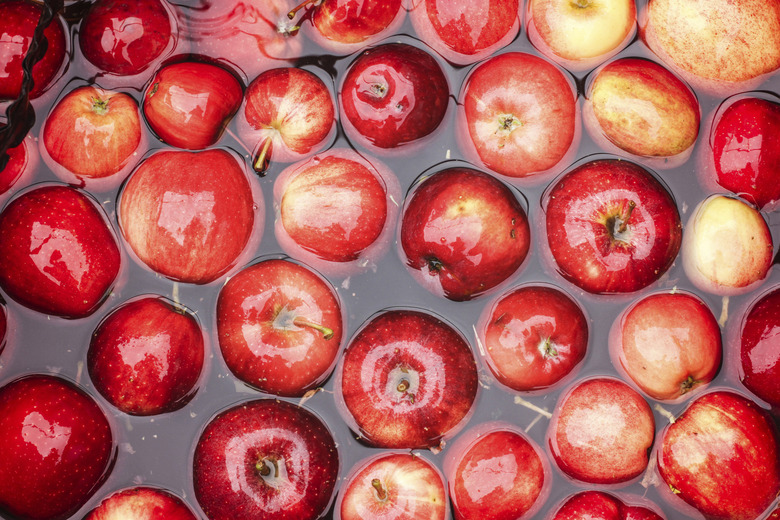How To Teach Buoyancy To Grade School Children
Most children can quickly identify objects that will float or sink, but teaching about buoyancy involves much more than floating objects in a bowl of water. It can be tricky to teach the relationship between water displacement, density, surface area and volume. Hands-on activities and real-world examples can help.
Teach About Water Displacement
Teach About Water Displacement
Objects float because they are being pushed on by a force equal to the weight of the water they displaced. Therefore, the starting point of teaching buoyancy is to help students understand water displacement. Ask the students what happens when something is placed in water. It floats or sinks, but something also happens to the water. Tell the student that the object and water can't be in the same space; the object pushes the water aside. This is called displacement. Show them how this works by filling a bowl of water almost to the rim and then placing something in the water. The object you place in the water should be large enough to push water over the edges of the bowl.
Teach About Density
Teach About Density
Next explain that objects that float are less dense than the water they pushed aside. Dense objects usually have more molecules that are crowded close together. Objects and water can become more dense or less dense if molecules or heat is added or taken away. Show the students a clear glass bowl or cup. Fill the container with tap water and ask the students to predict if an egg will float or sink in the water. Gently place the egg in the water, and it should sink. Explain that the egg is denser than the water it displaced. Then add salt to the water. Explain to the students that you are adding molecules to the water, thus making it more dense. The amount you add will vary depending on your container, but don't be stingy; the water should be quite cloudy with salt. Then add the egg again. It should float. Explain that because you added molecules to the water, the egg floats because now it is less dense than the water.
Teach About Weight and Volume
Teach About Weight and Volume
Ask almost any student, and she will tell you that heavy things sink and light things float. Although this is often the case, it does not adequately describe how buoyancy works. After all, large, heavy ships and enormous icebergs float. Ask the students which feels heavier: an apple or a paperclip. Then, have them predict which one will sink and which will float. The students will be surprised to see the apple float and the paperclip sink. Explain that the apple floats because it has a greater volume of air than the paperclip, even though it is heavier. Explain that volume is the amount of space an object fills, or occupies. A beach ball takes up the same space as a bowling ball, so they have the same volume, but the beach ball will float because its volume is mostly air. Ships are heavy, but they have air in their hulls that allows them to float. Objects that hold a lot of air or open space usually float. They are also usually — but not always — light, which is why light objects tend to float and heavy objects tend to sink.
Teach About Surface Area
Teach About Surface Area
Buoyancy is a force that pushes up on objects, and the more surface area the object has for the force to push up on, the greater chance it will float and the more weight it will hold. In addition, more water is displaced when the surface area of an object is large. Show the students two shallow caps — one should be wide, such as the lid to a container of sour cream, and the other should be small, such as the lid to a water bottle. Float the small lid in a bowl of water and stack pennies on it until it sinks. Ask the students to predict whether or not the same number of pennies will sink the wider lid and ask them to justify their predictions. Then put the same number of pennies on the wider lid. Explain that the greater surface area of the lid allows it to continue to float.
Cite This Article
MLA
Sanders, April. "How To Teach Buoyancy To Grade School Children" sciencing.com, https://www.sciencing.com/teach-buoyancy-grade-school-children-8159938/. 24 April 2017.
APA
Sanders, April. (2017, April 24). How To Teach Buoyancy To Grade School Children. sciencing.com. Retrieved from https://www.sciencing.com/teach-buoyancy-grade-school-children-8159938/
Chicago
Sanders, April. How To Teach Buoyancy To Grade School Children last modified March 24, 2022. https://www.sciencing.com/teach-buoyancy-grade-school-children-8159938/
